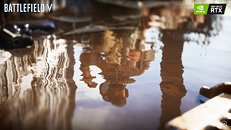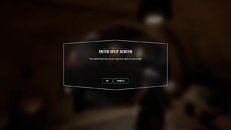
DICE to Dial Back Ray-tracing Eye-candy in Battlefield V to Favor Performance
EA-DICE, in an interview with Tom's Hardware, put out some juicy under-the-hood details about the PC release of "Battlefield V." The most prominent of these would be that the commercial release of the game will slightly dial back on the ray-tracing eye-candy we saw at NVIDIA's GeForce RTX launch event demo. DICE is rather conservative about its implementation of ray-tracing, and seems to assure players that the lack of it won't make a tangible difference to the game's production design, and will certainly not affect gameplay (eg: you won't be at a competitive disadvantage just because a squeaky clean car in the middle of a warzone won't reflect an enemy sniper's glint accurately).
"What I think that we will do is take a pass on the levels and see if there is something that sticks out," said Christian Holmquist, technical director at DICE. "Because the materials are not tweaked for ray tracing, but sometimes they may show off something that's too strong or something that was not directly intended. But otherwise we won't change the levels-they'll be as they are. And then we might need to change some parameters in the ray tracing engine itself to maybe tone something down a little bit," he added. Throughout the game's levels and maps, DICE identified objects and elements that could hit framerates hard when ray-tracing is enabled, and "dialed-down" ray-tracing for those assets. For example, a wall located in some level (probably a glass mosaic wall), hit performance too hard, and the developers had to tone down its level of detail.
"What I think that we will do is take a pass on the levels and see if there is something that sticks out," said Christian Holmquist, technical director at DICE. "Because the materials are not tweaked for ray tracing, but sometimes they may show off something that's too strong or something that was not directly intended. But otherwise we won't change the levels-they'll be as they are. And then we might need to change some parameters in the ray tracing engine itself to maybe tone something down a little bit," he added. Throughout the game's levels and maps, DICE identified objects and elements that could hit framerates hard when ray-tracing is enabled, and "dialed-down" ray-tracing for those assets. For example, a wall located in some level (probably a glass mosaic wall), hit performance too hard, and the developers had to tone down its level of detail.













































